- Understanding Soil Composition
- Components of Soil Composition
- Soil Composition and Plant Growth
- Analyzing Soil Composition
- Distinguishing Characteristics of Sandy Soil
- Characteristics:
- Uses and Considerations:
- The Unique Properties of Clay Soil
- 1. Composition
- 2. Water Retention
- 3. Drainage Issues
- 4. Nutrient Rich
- 5. Susceptibility to Compaction
- 6. Temperature Regulation
- 7. Workability
- 8. Erosion Control
- 9. Cracking
- 10. Soil Fertility Management
- Conclusion
- Loamy Soil: The Ideal Gardening Soil
- Composition:
- Characteristics:
- Benefits for Gardening:
- Recommended Plants:
- Care Tips:
- Silt Soil: A Fine-Textured Soil Type
- Characteristics of Silt Soil
- Uses of Silt Soil
- Management of Silt Soil
- Conclusion
- The Challenges of Peat Soil
- 1. High Moisture Content
- 2. Nutrient Deficiency
- 3. Acidity
- 4. Instability
- 5. Environmental Concerns
- Exploring the Benefits of Chalky Soil
- 1. Good Drainage:
- 2. Nutrient-Rich:
- 3. Alkaline pH:
- 4. Disease Resistance:
- 5. Soil Structure:
- 6. Slope Stability:
- 7. Adaptability:
- How to Amend and Improve Different Soil Types
- 1. Clay Soil
- 2. Sandy Soil
- 3. Silt Soil
- 4. Loam Soil
- 5. Peaty Soil
- 6. Chalky Soil
- 7. Saline Soil
- “Question-Answer”
- What are the different types of soils?
- What is sand soil made of?
- What is silt soil?
- How is clay soil different from other types of soil?
- What is loam soil?
- “Video” Consolidation Test of Soil: A Comprehensive Guide
Soil is an essential component of our environment, providing the foundation for plant growth and supporting diverse ecosystems. But did you know that not all soils are created equal? There are various types of soils found around the world, each with its own unique characteristics and properties. Understanding these different types of soils is crucial for farmers, gardeners, and environmentalists alike, as it can help optimize agricultural practices, manage water resources, and protect against soil erosion.
One of the key factors that distinguishes different types of soils is their composition. Soil is typically made up of mineral particles, organic matter, water, and air. The proportions of these components can vary greatly, resulting in soils of different textures and structures. For example, sandy soils are characterized by their larger, coarse particles, while clay soils have smaller, fine particles. Loamy soils, on the other hand, are a combination of sand, silt, and clay, making them ideal for plant growth due to their balanced drainage and nutrient-holding capacity.
Another important aspect of soil classification is its pH level. Soil pH is a measure of its acidity or alkalinity and can greatly influence the availability of essential nutrients to plants. Acidic soils, with a pH below 7, can limit the uptake of nutrients like nitrogen, phosphorus, and potassium, while alkaline soils, with a pH above 7, may have high levels of toxic elements like sodium and bicarbonate. Understanding the pH level of soil is crucial for selecting appropriate crops and implementing effective soil management practices.
Additionally, the geographical location and climate can also play a major role in soil formation and composition. For example, tropical rainforests often have nutrient-poor soils due to high levels of rainfall, which can wash away essential minerals. In contrast, regions with cold climates and low precipitation may have soils rich in organic matter, as decomposition rates are slower. These variations in soil types across different regions highlight the importance of considering local conditions when planning land use and agricultural practices.
Understanding Soil Composition
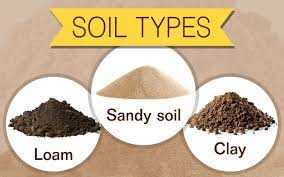
The composition of soil refers to the different materials that make up the soil and their relative proportions. Understanding soil composition is crucial in determining its fertility, drainage capabilities, and suitability for various types of plants.
Components of Soil Composition
Soil is made up of four main components:
- Minerals: These are the inorganic materials that make up the solid component of soil. Common minerals found in soil include clay, silt, sand, and gravel. The proportions of these minerals determine the soil’s texture, which in turn affects its water-holding capacity and drainage capabilities.
- Organic matter: Organic matter in soil comes from the decay of plant and animal materials. It includes materials such as humus, plant residues, and animal waste. Organic matter improves soil structure, increases nutrient availability, and enhances water retention.
- Air: Soil contains pockets of air that provide oxygen for plant roots and soil organisms. Adequate air-filled porosity is essential for root respiration and the survival of beneficial soil organisms.
- Water: Water is essential for plant growth and survival. It fills the pore spaces between soil particles and is held by capillary forces. The amount of water in soil affects its ability to support plant life.
Soil Composition and Plant Growth
The composition of soil greatly influences plant growth. Soil with a balanced composition provides essential nutrients, good drainage, proper aeration, and adequate water-holding capacity. Different plants have different soil requirements, and understanding the composition of the soil can help determine which plants are suitable for a particular location.
Analyzing Soil Composition
Soil composition can be analyzed through various methods, including visual assessment, soil testing, and laboratory analysis. Visual assessment involves observing the texture, color, and structure of the soil. Soil testing and laboratory analysis provide more accurate information about the proportions of minerals, organic matter content, pH level, and nutrient availability in the soil.
| Method | Description |
|---|---|
| Visual assessment | Observing soil texture, color, and structure |
| Soil testing | Evaluating pH level, nutrient content, and organic matter |
| Laboratory analysis | Accurate determination of soil composition and properties |
By understanding the composition of soil, gardeners and farmers can make informed decisions regarding soil management, fertility enhancement, and plant selection. Proper understanding and management of soil composition are essential for sustainable and productive agricultural practices.
Distinguishing Characteristics of Sandy Soil
Sandy soil is a type of soil that has a high concentration of sand particles. It is known for its light, gritty texture and its excellent drainage properties. Sandy soil is commonly found in arid and coastal regions, and it poses unique challenges and advantages for gardeners and farmers.
Characteristics:
- Texture: Sandy soil has a coarse texture that can be felt easily. It feels gritty and loose when dry, and it does not clump together like clay soil.
- Drainage: One of the distinguishing characteristics of sandy soil is its excellent drainage. Due to the large size of sand particles, water drains quickly through the soil, preventing waterlogging.
- Fertility: Sandy soil is usually low in fertility because sand particles do not hold onto nutrients well. The soil lacks the ability to retain water and nutrients, which can lead to nutrient leaching.
- Permeability: Sandy soil has high permeability, allowing water and air to move freely through the soil. This can be both an advantage and a disadvantage, as it can lead to rapid drying of the soil and an increased need for irrigation.
- Warms up quickly: Sandy soil warms up more quickly in the spring compared to other soil types. This can be beneficial for early planting and seed germination.
Uses and Considerations:
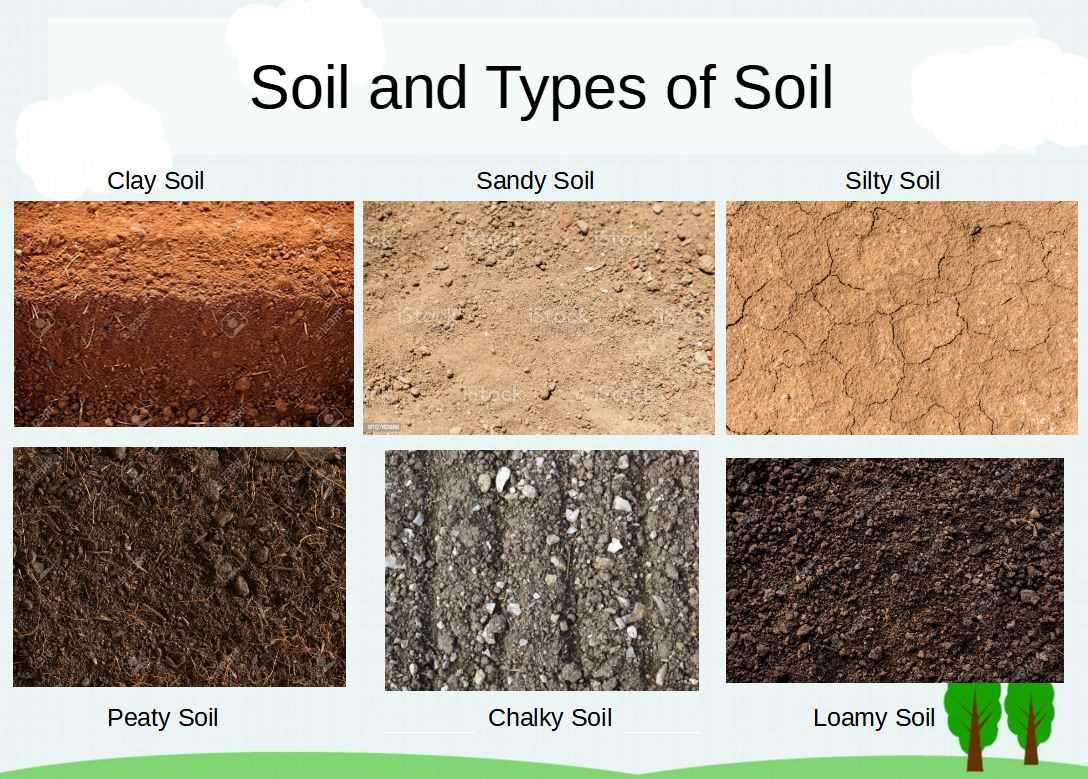
Due to its poor water and nutrient retention, sandy soil is not suitable for many plants that require moisture and rich soil. However, there are certain plants that thrive in sandy soil, such as cacti and other succulents, as well as some herbs and vegetables. Additionally, sandy soil is often used for construction purposes, such as creating a stable foundation.
| Plants | Characteristics |
|---|---|
| Cacti and Succulents | Drought-tolerant, store water in their leaves and stems |
| Herbs (e.g., Rosemary, Lavender) | Prefer well-drained soil, tolerate dry conditions |
| Carrots, Radishes | Root vegetables that can penetrate sandy soil easily |
When gardening in sandy soil, it is important to amend the soil with organic matter and nutrients to improve its fertility and water-holding capacity. Mulching and regular irrigation can also help to retain moisture in sandy soil. Overall, understanding the distinguishing characteristics of sandy soil is crucial for successful gardening and farming in such environments.
The Unique Properties of Clay Soil
Clay soil is a type of soil that has unique properties which set it apart from other soil types. Understanding these properties is crucial for gardeners and farmers, as it can greatly affect the success of their crops and plants.
1. Composition
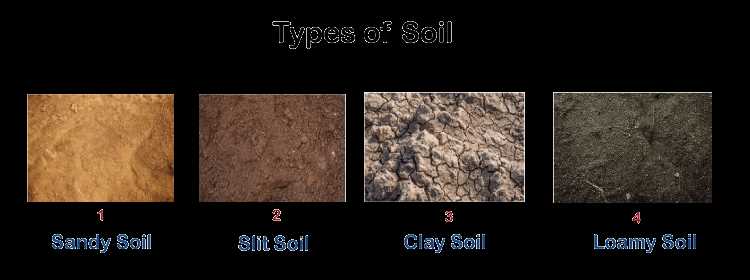
Clay soil is composed of very fine particles, much smaller than those found in sandy or loamy soil. These particles are packed tightly together, creating a dense and heavy soil structure.
2. Water Retention
One of the most notable properties of clay soil is its high water retention capacity. The small particles in clay can hold onto water for long periods of time, making it difficult for excess water to drain away.
3. Drainage Issues
Due to its compact structure and high water retention, clay soil often suffers from poor drainage. Excess water tends to pool on the surface or stay trapped in the soil, leading to waterlogging and potentially drowning the roots of plants.
4. Nutrient Rich
Despite its drainage issues, clay soil is known for being nutrient-rich. The tightly packed particles retain essential nutrients, making them available for plants to absorb. However, these nutrients can be easily depleted if not replenished regularly.
5. Susceptibility to Compaction
Because of its compact structure, clay soil is highly susceptible to compaction. Prolonged foot traffic or heavy machinery can further compact the soil, reducing air spaces and making it difficult for plant roots to penetrate and access oxygen.
6. Temperature Regulation
Clay soil has the ability to regulate temperature by retaining heat during colder periods and providing insulation during hot weather. This can be advantageous for plants, as it helps to protect them from extreme temperature fluctuations.
7. Workability
Clay soil is often described as sticky when wet and hard when dry. It can be challenging to work with, especially for gardening or farming purposes. Proper soil preparation techniques, such as adding organic matter or using raised beds, can improve its workability.
8. Erosion Control
Despite its dense structure, clay soil can be prone to erosion, particularly when left bare or exposed to heavy rain. Establishing vegetation cover or using erosion control measures, such as mulching or contour plowing, can help minimize erosion.
9. Cracking
When clay soil dries out, it tends to crack, creating fissures in the soil surface. These cracks can be detrimental to plant roots, as they may cause desiccation or hinder root growth. Adding organic matter and mulching can help mitigate cracking.
10. Soil Fertility Management
Due to its unique properties, managing the fertility of clay soil requires careful attention. Regular soil testing, proper nutrient management, and organic matter additions are essential for maintaining soil fertility and promoting healthy plant growth.
Conclusion
Clay soil possesses distinct properties that differentiate it from other types of soil. While it presents challenges in terms of drainage and workability, its nutrient-rich composition and temperature regulation capabilities make it suitable for certain types of plants. By understanding the unique properties of clay soil, gardeners and farmers can optimize their cultivation practices and maximize crop productivity.
Loamy Soil: The Ideal Gardening Soil
Loamy soil is considered to be the ideal soil for gardening due to its composition and characteristics. It is a combination of sand, silt, and clay particles, which gives it a balanced texture.
Composition:
Loamy soil contains approximately 40% sand, 40% silt, and 20% clay. This composition provides excellent drainage while retaining sufficient moisture for plant roots.
Characteristics:
- Loamy soil is well-drained but does not dry out too quickly.
- It has good fertility and nutrient-holding capacity.
- The balanced texture allows for easy root penetration and good aeration.
- It is rich in organic matter, which enhances soil structure and fertility.
Benefits for Gardening:
Due to its balanced texture and composition, loamy soil offers several benefits for gardening:
- It provides the right conditions for plant growth by allowing roots to penetrate easily and access nutrients.
- Loamy soil retains sufficient moisture without becoming waterlogged, preventing root rot and disease.
- It promotes good drainage, preventing waterlogging and allowing excess water to flow away.
- Loamy soil has excellent fertility, reducing the need for additional fertilizers.
Recommended Plants:
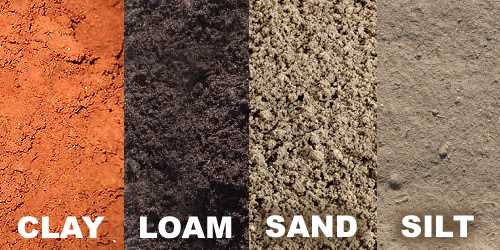
Loamy soil is suitable for a wide range of plants, including:
- Flowering plants and shrubs
- Vegetables and herbs
- Fruit trees and vines
- Perennials and annuals
Care Tips:
To maintain the quality of loamy soil and ensure optimal plant growth, follow these care tips:
- Add organic matter, such as compost or well-rotted manure, to enhance soil fertility and structure.
- Regularly mulch the soil surface to conserve moisture and suppress weed growth.
- Monitor soil moisture levels to avoid overwatering or drying out.
- Rotate crops to prevent nutrient depletion and disease buildup.
| Advantages | Disadvantages |
|---|---|
| Excellent drainage | May require additional organic matter |
| Retains moisture | May be more expensive than other soil types |
| Good aeration for roots | Requires regular monitoring of moisture levels |
| High fertility |
Silt Soil: A Fine-Textured Soil Type
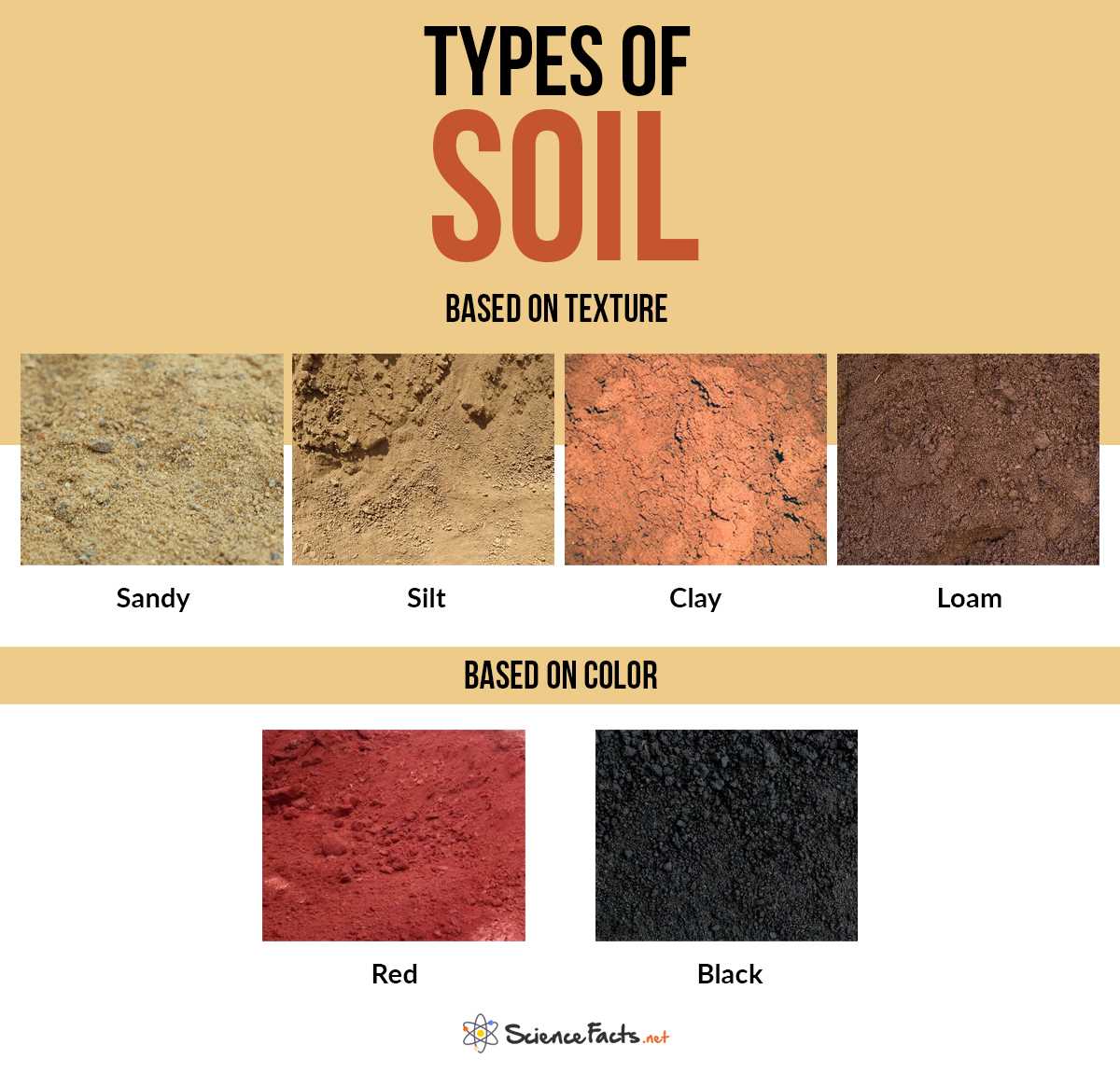
Silt soil is a type of soil with a fine texture that falls between the sizes of sand and clay particles. It is formed from the weathering and erosion of rocks and minerals over time. Silt particles are smaller than sand particles, but larger than clay particles, which gives the soil its unique characteristics.
Characteristics of Silt Soil
- Texture: Silt soil has a smooth and silky texture that feels floury when dry and slippery when wet.
- Water Retention: Due to its fine texture, silt soil has good water retention properties and can hold moisture for extended periods.
- Drainage: While silt soil has good water retention, it tends to have poor drainage capabilities. This can lead to waterlogged conditions if not managed properly.
- Fertility: Silt soil is generally fertile and rich in nutrients, making it suitable for farming and gardening.
- Erosion: Silt soil is susceptible to erosion, especially when exposed to heavy rains or strong winds. It can easily be carried away by water or wind, leading to the loss of topsoil.
Uses of Silt Soil
Silt soil has various uses in agriculture, construction, and landscaping:
- Agriculture: Silt soil is ideal for growing crops such as grains, vegetables, and fruits as it holds moisture well and is highly fertile.
- Construction: Silt soil can be used in construction projects for filling cavities or as a base for roads, foundations, and buildings.
- Landscaping: Silt soil can be used in landscaping to improve soil fertility, enhance water retention, and support the growth of plants and trees.
Management of Silt Soil
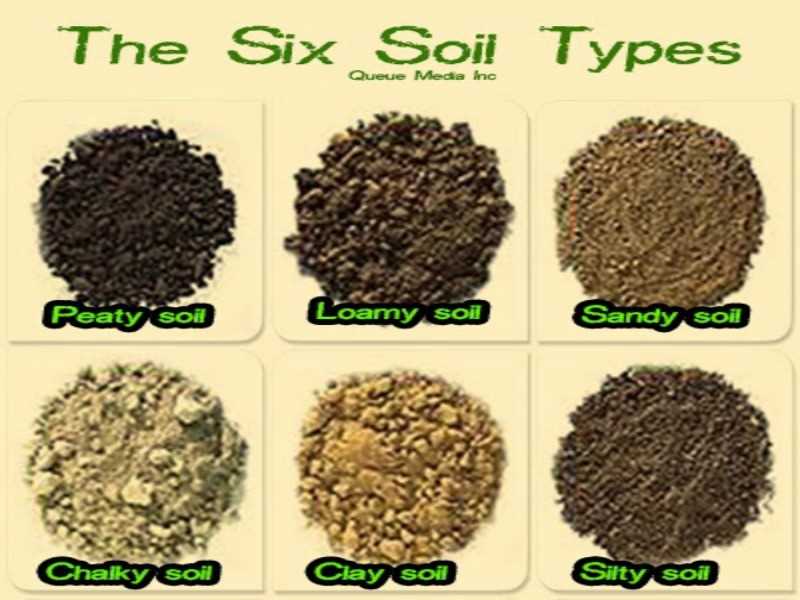
Proper management of silt soil is essential to maximize its benefits:
- Drainage: Improve the drainage capabilities of silt soil by adding organic matter, such as compost or mulch, to increase soil structure and prevent waterlogging.
- Erosion Control: Prevent erosion of silt soil by planting cover crops, creating terraces, or installing erosion control measures, such as retaining walls or windbreaks.
- Soil Amendments: Amend silt soil with organic matter, such as compost or manure, to improve fertility and enhance nutrient availability.
- Soil Testing: Regularly conduct soil testing to assess nutrient levels and pH balance in silt soil, and adjust fertilizer and lime applications accordingly.
Conclusion
Silt soil is a fine-textured soil type that has distinct characteristics and uses. While it has good water retention and fertility, it requires proper management to prevent issues with drainage and erosion. With appropriate care and maintenance, silt soil can be a valuable resource for agriculture, construction, and landscaping projects.
The Challenges of Peat Soil
Peat soil, also known as peaty soil or simply peat, is a type of soil that is characterized by its high organic matter content. It is formed from partially decomposed plant material that accumulates in waterlogged and oxygen-poor environments such as bogs and wetlands. While peat soil has some benefits, it also presents several challenges that must be addressed in order to successfully work with it.
1. High Moisture Content
One of the biggest challenges of peat soil is its high moisture content. Peat soil retains water very well due to its high organic matter content, which can lead to poor drainage. This can be detrimental to the growth of many plants as they require well-drained soil to prevent root rot and other moisture-related diseases.
2. Nutrient Deficiency
Peat soil is naturally low in essential plant nutrients such as nitrogen, phosphorus, and potassium. This can pose a challenge for plants that require these nutrients for healthy growth. Fertilizer application is often necessary to provide the necessary nutrients for plants growing in peat soil.
3. Acidity
Peat soil is typically acidic, with a pH level below 6. This acidity can affect the availability of nutrients to plants and can limit the types of plants that can thrive in peat soil. It may be necessary to adjust the pH of peat soil by adding lime or other alkaline materials in order to create a more optimal growing environment for a wider range of plants.
4. Instability
Peat soil is known for its unstable structure, which makes it prone to compaction and subsidence. When wet, peat soil can become very malleable and easily lose its shape. This can cause stability issues for infrastructure built on peat soil, such as buildings and roads.
5. Environmental Concerns
Peat soil plays an important role in the environment as a carbon sink, storing a significant amount of carbon. However, when peat soil is disturbed or drained for agriculture or other purposes, it can release large amounts of carbon dioxide into the atmosphere, contributing to greenhouse gas emissions. This is a significant environmental concern as it contributes to climate change.
In conclusion, peat soil presents several challenges due to its high moisture content, nutrient deficiency, acidity, instability, and environmental impact. However, with proper management and mitigation strategies, these challenges can be addressed to allow for successful use of peat soil in various applications.
Exploring the Benefits of Chalky Soil
Chalky soil is a type of soil that has a high concentration of calcium carbonate, which gives it its characteristic white color. This type of soil is commonly found in areas with chalk or limestone deposits. While chalky soil can present some challenges for gardeners, it also offers several benefits for certain types of plants.
1. Good Drainage:
One of the key benefits of chalky soil is its excellent drainage properties. The porous nature of the soil allows water to pass through quickly, preventing the soil from becoming waterlogged. This is particularly advantageous for plants that prefer drier conditions and are prone to root rot in heavy or clay soils.
2. Nutrient-Rich:
Chalky soil is typically high in minerals such as calcium, magnesium, and potassium. These nutrients are essential for plant growth and development. Additionally, the alkaline nature of chalky soil can enhance the availability of certain nutrients, such as phosphorus, which plants need for healthy root development and flowering.
3. Alkaline pH:
Chalky soil tends to have an alkaline pH, which ranges between 7.1 and 8. However, the pH can vary depending on the specific location. This alkalinity can benefit plants that prefer slightly alkaline conditions, such as lavender, lilacs, and certain fruits and vegetables like beets and cabbage.
4. Disease Resistance:
Some plant diseases, such as clubroot in brassicas, thrive in acidic soils. The alkaline nature of chalky soil can help prevent the development and spread of these diseases, providing a natural defense for plants.
5. Soil Structure:
Chalky soil has a crumbly texture, which allows for good aeration and root penetration. This can promote healthy root growth and enable plants to access essential nutrients and water more efficiently.
6. Slope Stability:
Chalky soil is known for its stability, making it suitable for gardening on slopes. The cohesive nature of the soil helps prevent erosion and provide structural support for plants.
7. Adaptability:
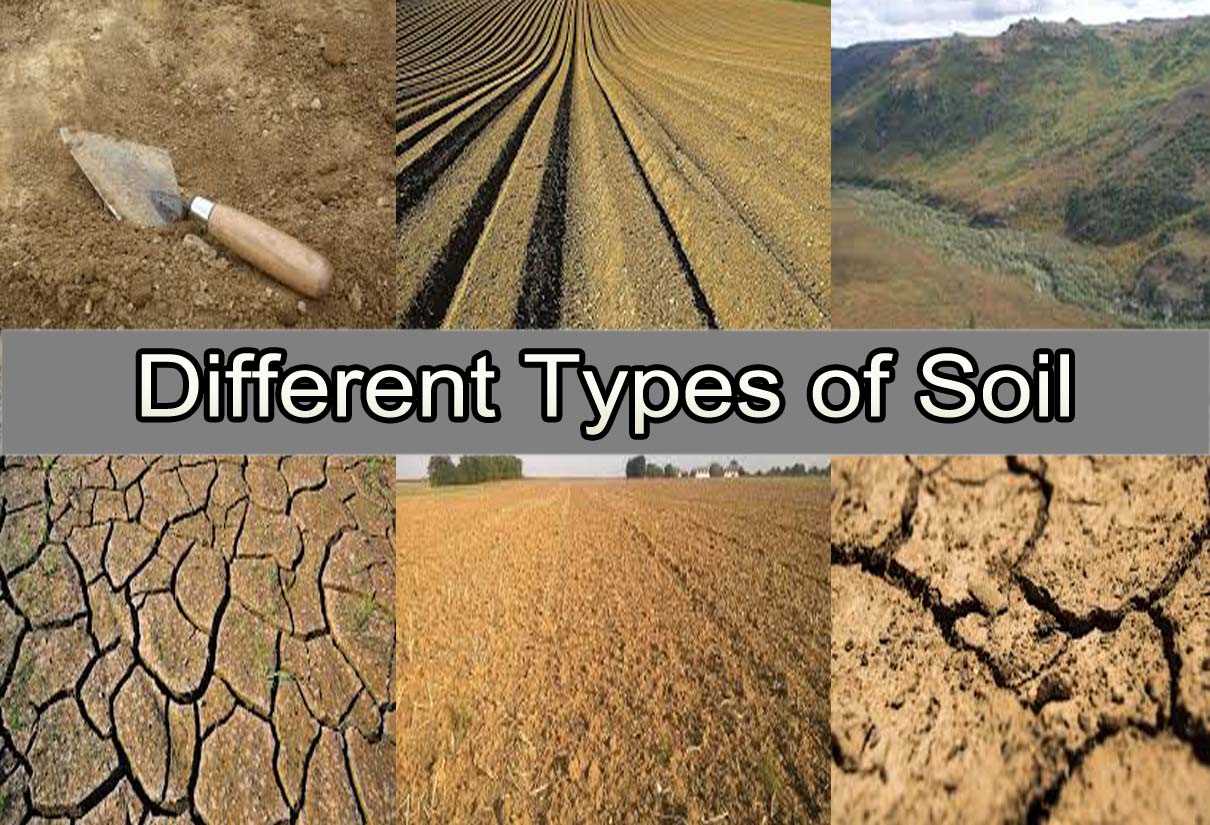
Chalky soil can be improved by adding organic matter, such as compost or well-rotted manure, to enhance its fertility and water-holding capacity. This adaptability allows gardeners to cultivate a wide range of plants in chalky soil.
In conclusion, while chalky soil may require certain amendments and considerations, its benefits, including good drainage, nutrient richness, alkaline pH, disease resistance, desirable soil structure, slope stability, and adaptability, make it a suitable choice for growing specific types of plants.
How to Amend and Improve Different Soil Types
1. Clay Soil
Clay soil is heavy and tends to be compacted, making it difficult for water and air to penetrate. To amend clay soil:
- Use organic matter, such as compost, to improve drainage and break up the compacted soil.
- Add sand or grit to increase the soil’s drainage capabilities.
- Avoid over-watering, as excess moisture can contribute to further compaction.
2. Sandy Soil
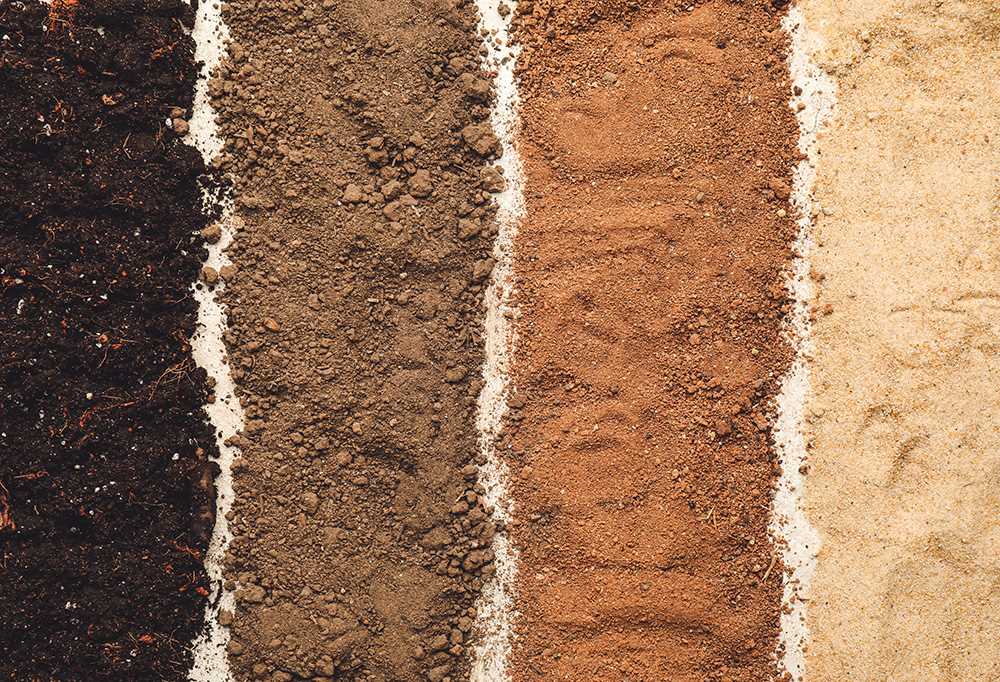
Sandy soil is loose and drains quickly, often leading to nutrient deficiencies. To amend sandy soil:
- Incorporate organic matter, such as compost or well-rotted manure, to increase water and nutrient retention.
- Add clay or silt to improve the soil’s water-holding capacity.
- Use mulch to reduce water evaporation and prevent the soil from drying out quickly.
3. Silt Soil
Silt soil is smooth and retains moisture well but can become compacted. To amend silt soil:
- Introduce organic matter to improve the soil’s structure and drainage.
- Aerate the soil by tilling or using a garden fork to prevent compaction.
- Add sand or grit to improve drainage if the soil becomes waterlogged.
4. Loam Soil
Loam soil is a balanced combination of clay, silt, and sand, providing an ideal growing environment. However, it can still benefit from amendments:
- Add organic matter regularly to maintain soil health and fertility.
- Avoid overwatering, as loam soil retains moisture well.
- Monitor nutrient levels and adjust fertilization accordingly.
5. Peaty Soil
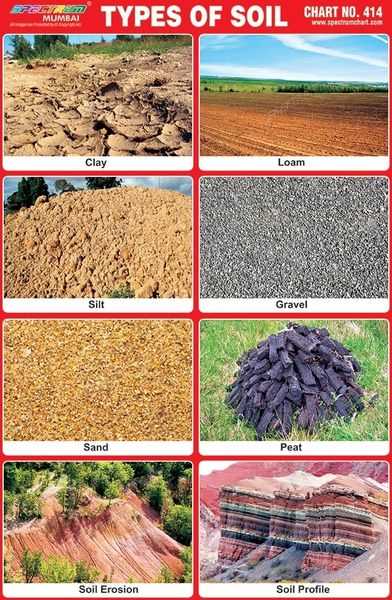
Peaty soil is rich in organic matter but can be acidic and low in nutrients. To amend peaty soil:
- Test the pH level and adjust it if necessary by adding lime to raise the pH or sulfur to lower it.
- Supplement with fertilizers to provide necessary nutrients.
- Amend with well-rotted compost or manure to improve soil structure and drainage.
6. Chalky Soil
Chalky soil is alkaline and tends to be shallow, stony, and free-draining. To amend chalky soil:
- Test the pH level and adjust it if necessary by adding organic matter, such as compost or well-rotted manure.
- Amend with organic matter to improve moisture retention and nutrient levels.
- Consider growing plants that are tolerant of alkaline conditions.
7. Saline Soil
Saline soil has a high salt content, which can affect plant growth. To amend saline soil:
- Flush the soil with fresh water to leach out excess salts.
- Amend with organic matter to improve soil structure and drainage.
- Consider growing salt-tolerant plants or using raised beds with imported soil.
| Soil Type | Amendments |
|---|---|
| Clay Soil | Organic matter, sand or grit |
| Sandy Soil | Organic matter, clay or silt, mulch |
| Silt Soil | Organic matter, sand or grit |
| Loam Soil | Organic matter, proper watering, nutrient monitoring |
| Peaty Soil | pH adjustment, organic matter, fertilizers |
| Chalky Soil | pH adjustment, organic matter, alkaline-tolerant plants |
| Saline Soil | Leaching, organic matter, salt-tolerant plants or raised beds |
“Question-Answer”
What are the different types of soils?
The different types of soils include sand, silt, clay, loam, and peat.
What is sand soil made of?
Sand soil is made up of small particles of weathered rock, such as quartz, and has a coarse texture.
What is silt soil?
Silt soil has smaller particles than sand soil and feels smooth and slippery when wet. It is often fertile and retains water well.
How is clay soil different from other types of soil?
Clay soil has the smallest particles and feels sticky when wet and hard when dry. It tends to retain water and nutrients, but can be difficult to work with due to its heavy texture.
What is loam soil?
Loam soil is a mixture of sand, silt, and clay. It has a balanced texture and is considered ideal for gardening because it retains water well while allowing for good drainage.







